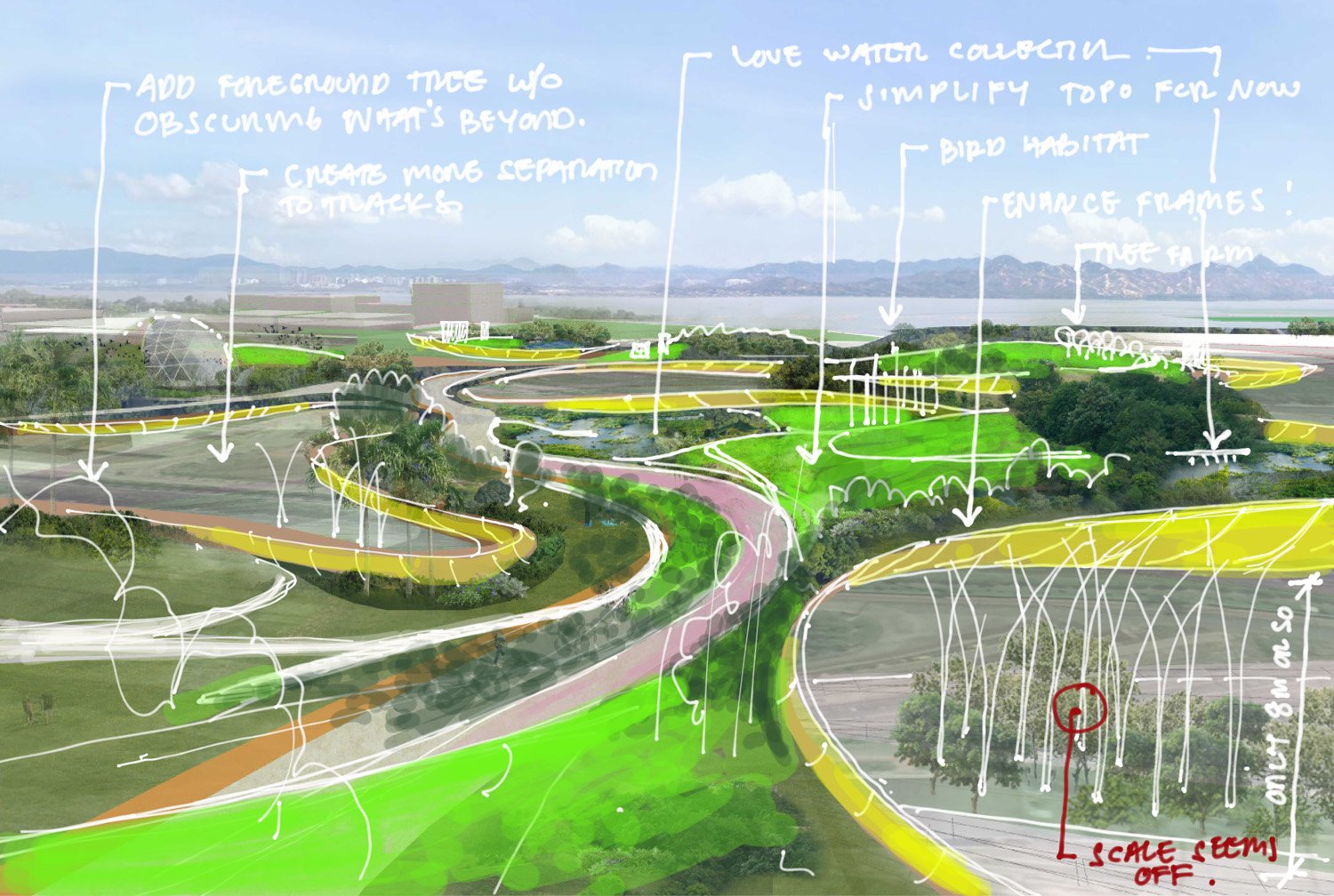The Mangrove Museum Mountain to Bay Ecological Corridor | Shenzhen, China
Shenzhen is a stunning contemporary city, and in recent years has been considered one of the world's fastest-growing cities. Once a small fishing community, the city has mushroomed to over 12 million people stretching more than 15km west to east. In its former natural state, Shenzhen was defined by a contiguous topographic and ecological gradient rising from the rich Pearl River to the mountainous region (Antuo Mountain) along the city's northern boundary. The continuity of surface from low to high as part of the larger, regional morphology resulted in a series of robust transitional ecologies moving from Mountain to Bay: a multi-layered, overlapping, resilient, and diverse ecological network.
In recent years, the city began to think more comprehensively and collectively about the role of ecology as a primary ingredient of resilient urbanism. A careful review of the expansion of urban growth over time reveals a wholesale ecological disconnect between the Mountains' natural resources and the resource area of the Bay and Pearl River basin. To rectify this, the City Government has identified seven potential, though latent, corridors within the urban fabric where reconnection of mountain and sea could be realized. The City Government then designated the central corridor as a case study where basic principles for ecological and cultural reconnection are established, tested, and described within the context of the Ecological Framework Plan.
Client: Guangdong Neilingding Futian National Nature Reserve Management Bureau, Planning and, Natural Resource Bureau of Shenzhen Municipality, Urban Management Bureau of Shenzhen Municipality, Shenzhen Municipal People's Government
Collaborators: Adele Santos, Santos Prescott Associate | Rafi Segal, Associate Professor of Architecture and Urbanism, MIT | Huang Weidong, Executive VP, Technical Director, Urban Planning & Design Institute of Shenzhen
Status: Plan completed 2021
Awards: 2023 BSLA Merit Award, 2022 Hong Kong Institute of Urban Design, The Greater Bay Area Urban Design Awards Grand Award, Plan/Concept
The Mangrove Museum Mountain to Bay Ecological Corridor is a pursuit to create green, vibrant places within the high-density city. The project's primary objective establishes a framework for new public spaces that integrates ecology and culture of different landscape zones (Biomes) that extend from the mountains, through the city fabric, and down to the bay. The first zone, Mangrove Park, deals with eliminating invasive species and re-introducing mangroves to restore the ecology damaged from industrialization. The second zone is the Sea of Flowers, a landscape built upon a platform to create hills and valleys for local flora and fauna to emerge. Next is a landscape built on a platform that extends over an existing railyard that will develop as an urban forest with nesting walls for migrating birds. The fourth zone is the expo-park, a restored landscape showcasing traditional Chinese gardens. The corridor then arrives at the mountain foothills, the planned site of a new architectural building and Cultural Center where the final land bridge extends from the base of foothills up into the mountain.
Special connectors, or Ecotones, were established between each zone to elongate the ecological experiences. Composed of elements from each adjacent Biome, the overlap ensures a more sturdy and resilient cord between each Biome and across the entire transect. In this case, the Ecotones are vegetated, earthen bridges spanning the highways to foster beneficial physical connections, enabling the passage of small mammals and people alike. The Ecotones also contribute to the continuity of the tree canopy, further enhancing bird habitat and other urban tree system benefits.
The team assessed and assigned each Biome and Ecotone with a particular set of qualifications: materials, forest scenarios, plant selections, and the extent to which cultural interplay could integrate within and between each area. In this way, a more seamless and resilient ecological and cultural corridor would emerge, one that allows for more balanced urbanism for both people, ecologies, animals, and, of course, the birds. This adaptable model can be applied to other similar corridors throughout The City and Region. Though each Biome is defined by careful research of local conditions and adjacencies, each new corridor would have a unique look, feel, and experience.





























































